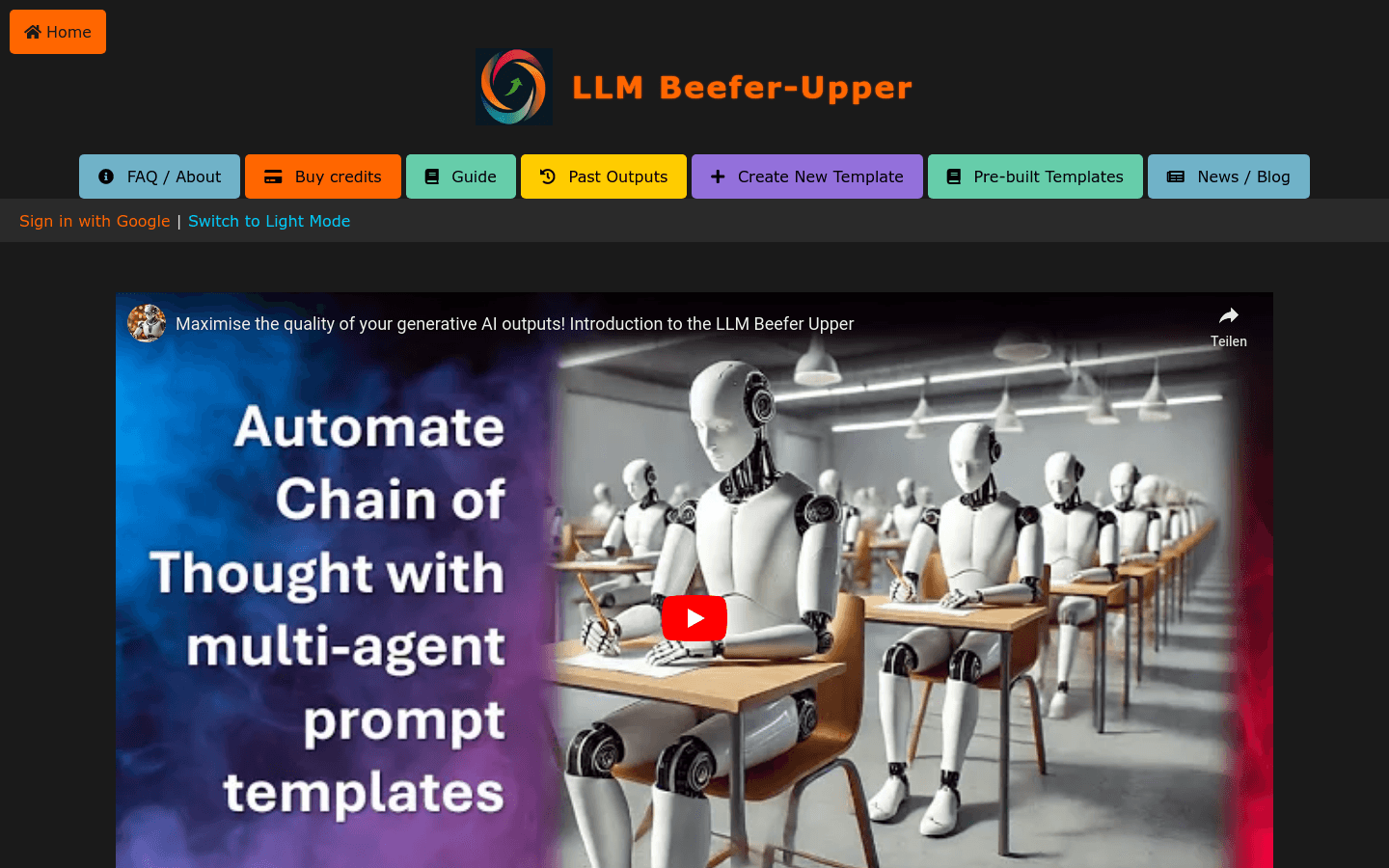

LLM Quality Beefer Upper
Overview :
LLM Quality Beefer-Upper is a platform designed to enhance the response quality of large language models (LLMs) through automated critique, reflection, and improvement processes. It employs a chain-of-thought approach, proven to be the most effective method for enhancing LLM quality and accuracy. Users can utilize and refine both customized and pre-built multi-agent prompt templates to obtain the most reliable and high-quality outputs. The platform currently utilizes the Claude Sonnet 3.5 API, recognized as the best LLM on the market. It will adopt superior models immediately upon their release, as delivering the highest quality outputs is the sole objective of this application.
Target Users :
The target audience comprises professionals and teams who require high-quality outputs, such as researchers, writers, editors, and product managers. They can achieve more accurate and reliable information and advice using LLM Quality Beefer-Upper, thereby enhancing their work efficiency and decision-making quality.
Use Cases
Researchers use this tool to obtain more in-depth data analysis and research outcomes.
Writers leverage it to enhance the quality of articles and books.
Product managers use it to gain more accurate market insights and user feedback.
Features
Automating critique and improvement of LLM outputs.
Utilizing chain-of-thought methodology to enhance quality and accuracy.
Customizing and pre-building multi-agent prompt templates.
Generating drafts of multi-agent prompts.
Uploading knowledge texts and providing custom context.
Offering three quality level service options.
How to Use
Step 1: Visit the LLM Quality Beefer-Upper website and register an account.
Step 2: Choose a quality level service, such as Burger, Ribs, or Steak.
Step 3: Upload the necessary knowledge text or provide contextual information.
Step 4: Select or create a prompt template as needed.
Step 5: Submit the task and wait for the AI to provide critiques, suggestions, and improvements.
Step 6: Review the AI's output and make adjustments as necessary.
Featured AI Tools

Volcano Ark
Volcano Ark provides comprehensive functions and services for model training, inference, evaluation, and fine-tuning, and focuses on supporting the large model ecosystem. Curated models ensure model stability, a rich platform of applications and tools, information security, powerful computing capabilities, and professional services. Key functions include Model Marketplace, Model Experience, Model Training & Inference, and Model Applications. Suitable for application scenarios in industries such as automobiles, finance, consumer goods, the broad internet, and education & office.
Model training and deployment
159.5K

Auroraai
Developed by Incribo, AuroraAI generates safe and high-quality training data to accelerate the development of your AI models. It can be used for a variety of purposes, including voice synthesis, audio segmentation, character modeling, landscape design, and image processing. AuroraAI prioritizes privacy protection, cost-effectiveness, supports multimodal data generation, has limitless variation possibilities, users own the data, and can use it directly. Currently in early access, join our community.
Model training and deployment
93.3K








